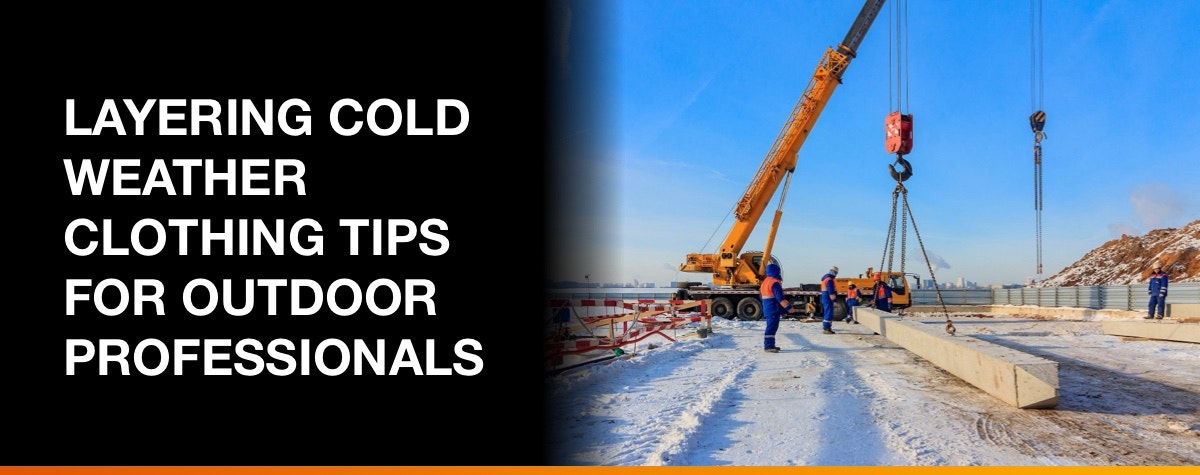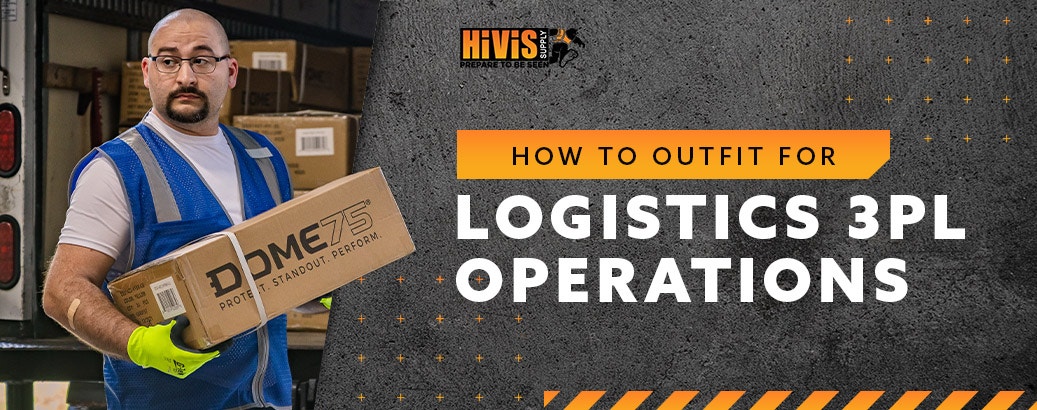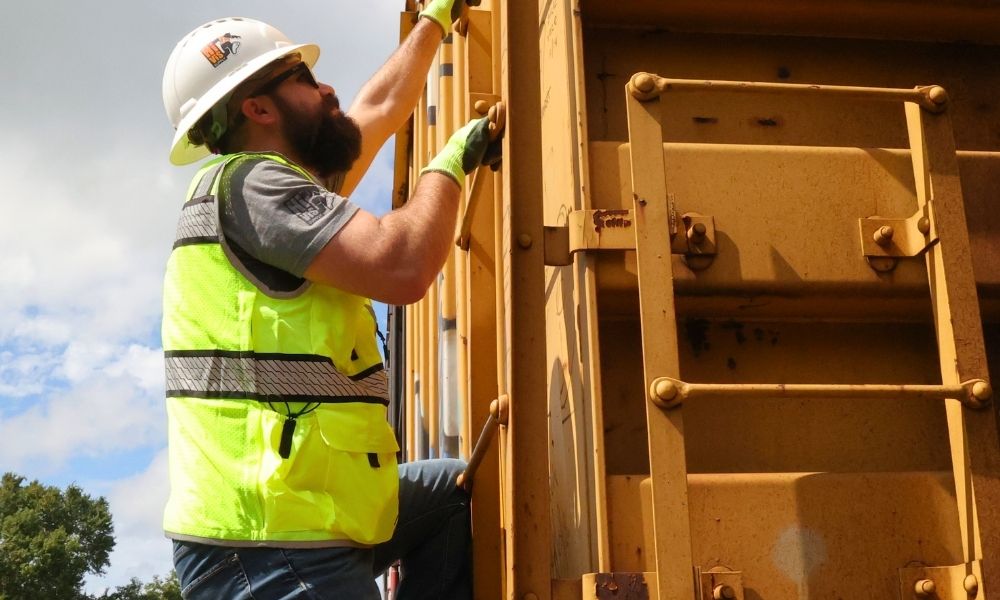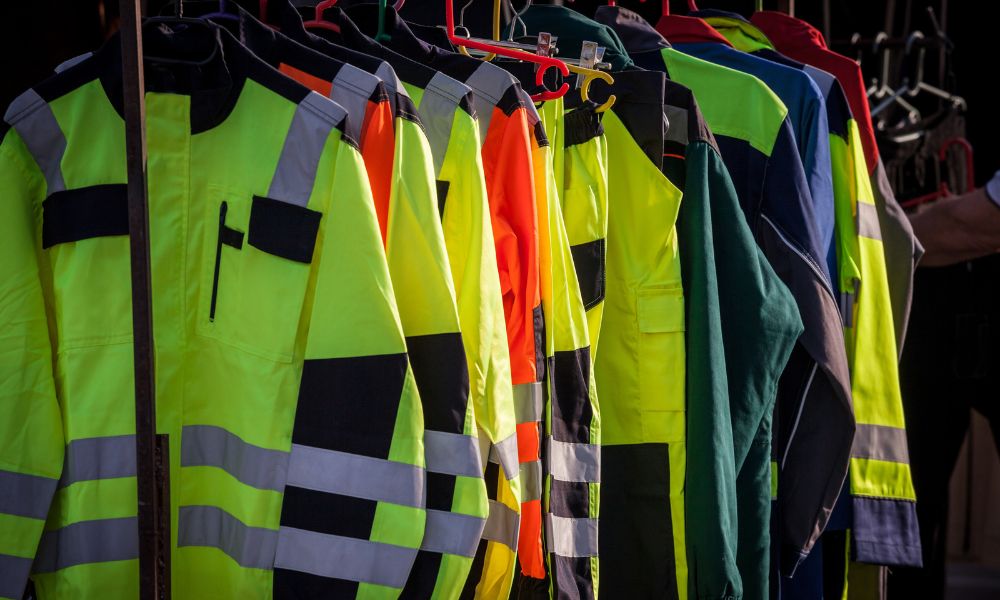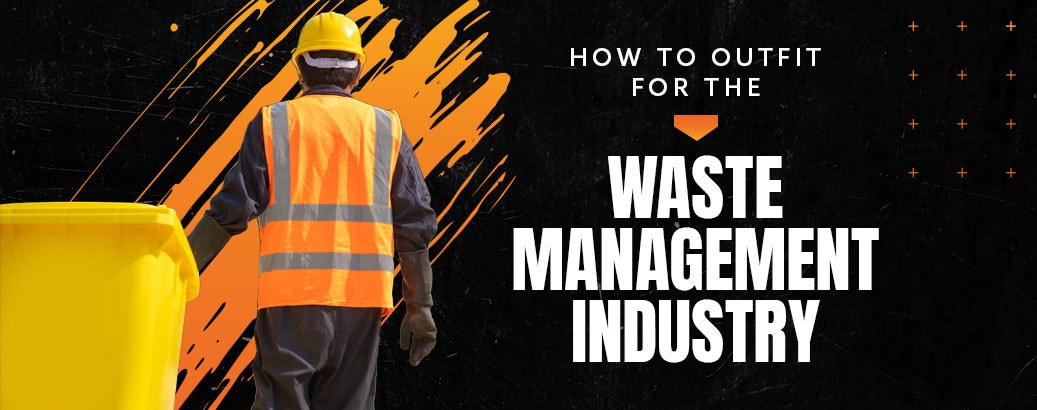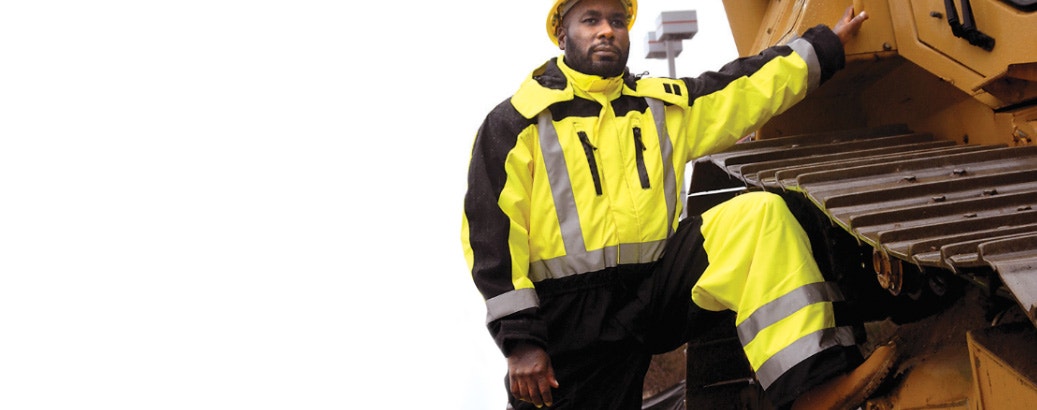Tips on Layering HiVis FR Workwear for Best Protection
- By HiVis Supply
- Jan 25, 2021

A flash fire or arc flash happens in a tiny fraction of a second, but it has the power to end a worker’s life or scar them forever. These powerful discharges of heat energy are among the most dangerous hazards that workers face on the job, which means that it’s critically important to take all necessary precautions against them.
Wearing flame-resistant (FR) clothing is one of the most important protective measures that workers use to guard themselves against the devastating effects of arc flashes and flash fires. In some cases, it’s recommended for electrical maintenance professionals and other workers who need FR clothing to layer their FR workwear to make it more comfortable and/or more effective.
This post will give you the basics you need to know about layering FR workwear. Read on to learn more about what FR workwear does and how to layer it correctly—plus, find out about the best FR workwear options from the experts at HiVis Supply.

Introduction to FR Workwear
Let’s do a quick review of the basics of FR workwear. A piece of FR workwear is designed to protect the worker from arc flashes and flash fires by absorbing heat and self-extinguishing when it comes in contact with an open flame or another source of extreme heat. Non-FR clothing can catch on fire when exposed to extreme heat levels, and the result is often severe injury or death for the worker.
So, as you can probably understand, FR clothing is something that every worker needs to take seriously on the job. That means learning about FR clothing, how to choose the right FR garments, and how to wear FR clothing correctly.
FR clothing is made with a wide range of materials and techniques. Some FR gear is made from fabrics with naturally flame-resistant polymers woven in, while other garments are made with fabrics treated with flame-resistant chemicals. But no matter what kind of FR clothing you’re using, it’s critical to understand HRC, the main rating system used to evaluate FR clothing performance.
Understanding the Hazard Rating Category (HRC) System
The Hazard Risk Category (HRC) system is a rating scale that comes from the NFPA 70E standard. It allows workers to evaluate FR workwear and decide whether it provides enough protection against heat and arc flashes. Each HRC level has a “calories/cm2” rating that establishes the amount of heat that a garment has to be able to absorb. “Calories” here is used in its original sense as a unit of heat energy rather than having anything to do with food. The HRC levels are as follows:
- HRC 1: 4 cal/cm2
- HRC 2: 8 cal/cm2
- HRC 3: 25 cal/cm2
- HRC 4: 40 cal/cm2
Your job’s safety procedures manual should tell you which specific HRC level you need for each task. If you’ve got any questions, ask your supervisor or safety coordinator for clarification. You also might need to know the Arc Thermal Performance Value (ATPV) or Energy Break-open Threshold (EBT) of your FR workwear, depending on the application. Next, it’s time to start talking about the focus of our discussion: the technique of layering FR workwear.

Why Layer FR Workwear?
Layering flame-resistant workwear is common for workers in industries that need flash fire and arc flash protection. It’s important because it can simultaneously make your FR garments more comfortable and more protective. Let’s examine those two characteristics one at a time.
First, there’s no denying that the heavy-duty nature of many FR garments can make them feel bulky and uncomfortable (although today’s best FR clothing includes design features that can make it more comfortable than you might expect). So, rather than wearing a single bulky FR layer, many industry pros choose to wear a combination of FR garments in layers. This also allows them to add and remove them throughout the workday as needed.
Layered FR clothing can also provide a higher level of protection than a single heavy layer of FR clothing. That’s because each layer of FR workwear will leave a tiny gap of air between itself and the layer below it. That gap is called an air barrier, and it’s a well-established concept for increasing the effectiveness of PPE in fields such as turnout gear for firefighters.

What’s the HRC of My Layered FR Clothing?
First, a little bit of bad news: You shouldn’t attempt to calculate the HRC of a multi-layered FR clothing system yourself. It might seem like a simple matter of adding together the calorie ratings of the layers, but it’s not. Calculating the cal/cm2 rating of a layered FR clothing kit can be tricky because of the many different FR clothing materials and differences in how the clothes are designed.
Instead, your layered FR clothing needs to be tested together as a single system using the standards outlined in ASTM 1959 for testing FR clothing. This is the only real way to get a scientifically accurate HRC rating for a multi-layer FR clothing system. However, you also typically won’t have to go it alone when it comes to figuring out an appropriate combination of FR clothing. Usually, you’ll be able to work with your employer and your FR clothing supplier to find the right combination of FR gear that’s right for your application.
FR Workwear and High Visibility Standards
It’s important to know about the high-visibility standards that your FR workwear might also need to meet and the high-visibility FR clothing that will allow you to meet those standards. A lot of the jobs where you’ll need FR clothing also require ANSI 107-compliant high-visibility gear. That gear needs to be visible at all times to stay in compliance.
If you’re going to need to add and remove layers of FR clothing throughout your workday, your gear must comply with both ANSI high-visibility standards and HRC standards. Thus, you should always make sure that your top layer garment has the right ANSI rating and the right HRC rating for the job you’re currently doing.
Finally, if your job doesn’t require ANSI 107-compliant garments, remember that non-ANSI enhanced-visibility workwear can be a great option. This gear isn’t designed to comply with a specific ANSI standard but still provides an extra visibility boost that makes workers easier to see, which makes it a strong choice for many different applications. For a complete guide to the basics of FR workwear and how it can fulfill both high-visibility and flame-resistant roles, see our guide to dual-performance FR workwear.

Tips for Layering FR Workwear
No matter what the total HRC rating of your workwear combination is, you can still follow best practices for layering FR gear. When layering high-visibility and FR workwear, here are some important things to remember:
- Consider your daily tasks and think about which ones will require you to wear FR clothing. Many workers only do one or two tasks a day where FR protection is necessary. If this is the case for you, try making your FR outer layer one that’s easy to take on and off when you don’t need it anymore.
- When you’re performing a task that you need FR rated clothing for, never wear a non-FR garment as your top layer. Doing this defeats the purpose of any other FR gear you’re wearing.
- Any fabric that melts, such as nylon, shouldn’t be part of your FR ensemble, even if it’s under other clothes. Under some circumstances, it can be acceptable to wear a non-FR but non-melting fabric, such as cotton, underneath your FR gear.
- Make sure that each piece of FR gear you add to your collection is one that’s comfortable and fits you well. If your FR layers are causing you discomfort at work, you’re potentially putting yourself at risk for distraction during critical moments.
- Be careful that other garments you’re wearing don’t cover up the reflective material on your high visibility garments. ANSI classes are determined by specific amounts of colored and reflective material present, so arranging your layers carelessly, such as wearing a non-ANSI vest over your jacket, might leave you out of compliance and at risk of an accident.
- Choose a moisture-wicking FR garment for your base layer. Sweat building up underneath your clothes can make your workday miserable. However, it can also be dangerous if you’re working in a cold environment and make your winter gear less effective because the sweat will cool on your skin and steal precious heat from your body.
HiVis FR Workwear That’s Great for Layering
HiVis Supply is an industry leader in dual-performance FR hi vis workwear that’s built for uncompromising toughness in the working world. These are some of our best hi vis FR workwear options:

- ML Kishigo F594 Class 3 HiVis FR HRC 2 Long Sleeve Henley Safety T-Shirt: This FR safety t-shirt makes a perfect base layer for FR layering. Modacrylic fabric provides improved breathability throughout the workday and segmented FR tape design helps reduce hot spots while you’re on the job.

- National Safety Apparel VIZABLE FR Class 3 HRC 2 Long Sleeve Segmented Button Down Work Shirt: For a clean-cut look with uncompromising hi vis and FR performance, choose this FR button down. Its roomy, comfortable cut gives you plenty of flexibility, while the Westex DH fabric wicks away moisture and resists rips and tears.

- ML Kishigo F442 Economy Class 2 FR Safety Vest HRC-2: This hi vis vest is the perfect combination of safety performance and cost-effectiveness, with a Modacrylic blend fabric, reflective striping, and a built-in four-division pencil pocket. It makes a great top layer that’s easy to get on and off.

- National Safety Apparel 99223 Arc-Rated FR Cotton Utility Safety Vest: Professionals love this HRC 2 arc-rated vest made from flame-resistant cotton. It’s durable, but light and simple to put on when you need a little extra visibility. This is a non-ANSI enhanced-visibility vest.

- National Safety Apparel VIZABLE FR Class 3 HRC 3 Waffle Weave Segmented Zippered Sweatshirt: The power of the waffle is no joke—this Modacrylic fleece blend provides rugged HRC 3 protection while keeping you toasty in cold work environments. Its drawstring hood with cord locks makes it a cinch to fit over any standard hard hat.

- National Safety Apparel VIZABLE FR Class 3 HRC 4 Hybrid Black Bottom Extreme Parka: When you need extreme arc flash protection paired with heavy-duty insulation, this warm and durable hi vis sweatshirt is an ideal choice. It’s a great option for a durable top layer in cold environments, and its Westex Ultrasoft material is comfy and breathable but hangs tough with the best of them.

- Neese 207AJ Class 3 PetroArc HiVis HRC 2 FR Neoprene Nomex Safety Rain Jacket: This super-versatile rain jacket provides not just FR protection but ANSI Class 3 protection that makes it the perfect jacket for night road work. Adjustable cuffs, a tuck-away hood, and a Nomex mesh vented back make this a uniquely comfortable jacket for jobs where adaptability is everything.

- National Safety Apparel Enhanced Visibility FR Navy HRC 2 Gore-Tex Foul Weather Safety Jacket: This jacket is built for bad weather and so much more. Its GORE-TEX PYRAD® material is rated to protect against everything from flash fires to steam, to oil-based mud, making it a state-of-the-art FR outerwear layer that’s especially good for workers in the oil and gas industries.

- Neese VM7CA3 Class 3 HiVis FR HRC 2 Nomex Safety Coverall: An awesome all-in-one solution, this Modacrylic safety coverall is ready for action on day one. Stress point reinforcements and vented legs make it comfortable to move and work in even when wearing additional layers underneath.

- Portwest FR94 Iona BizFlame 88/12 Enhanced Visibility FR Coverall HRC-2: Another top-quality FR coverall at an unbeatable price point, this Portwest work suit is built for flash fire protection and is incredibly easy to slip over other clothes. Because it’s available in a wide range of colors, it’s perfect for workplace color-coding systems.
Ready to explore HiVis Supply’s whole range of FR clothing? We’ve got hi vis FR vests, hi vis FR jackets, and so much more. Just click any link to get started, and make sure to also check out our winter gear if it’s time to take on the chill.


